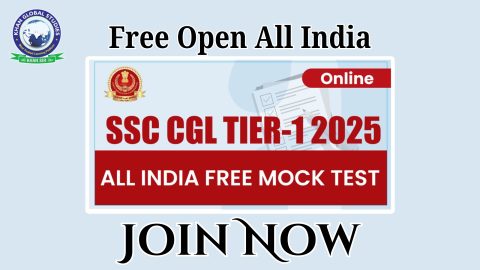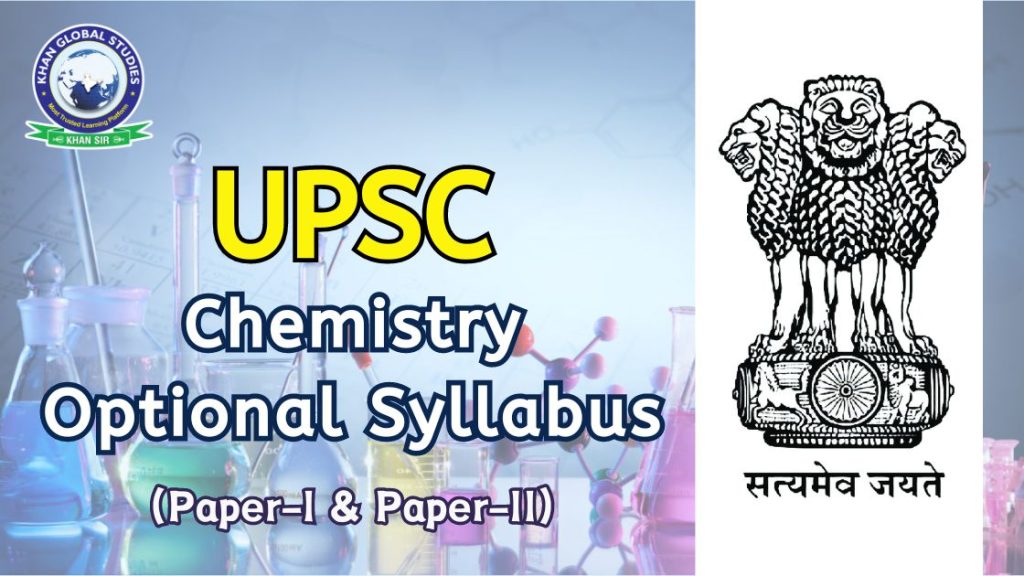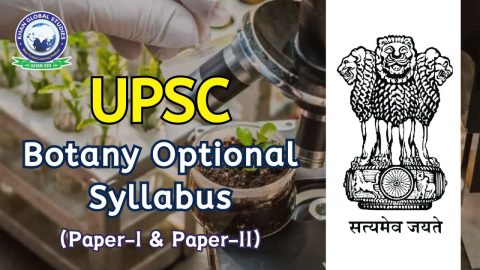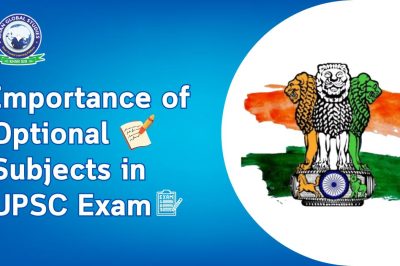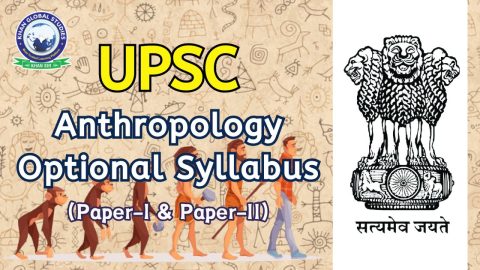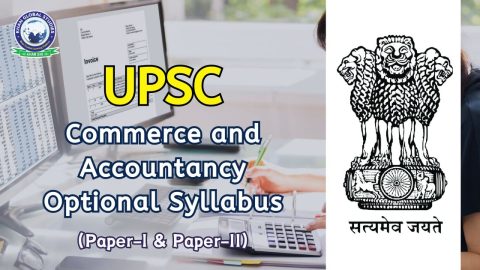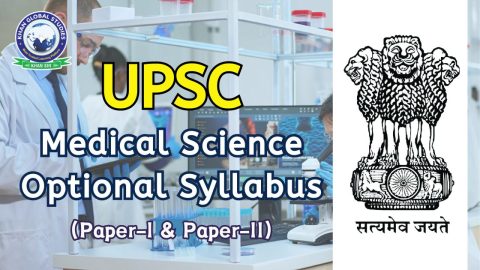UPSC Chemistry Optional Syllabus is designed for candidates with a chemistry background at the undergraduate or postgraduate level. It covers subjects at the undergraduate degree level and is divided into two papers, each worth 250 marks. While preparing for UPSC Chemistry Optional, candidates should adopt a strategic approach because of the special nature of the subject.
UPSC Chemistry Optional Syllabus
The chemistry exam consists of two papers, Paper 1 and Paper 2 in UPSC Mains Exam. Each paper carries 250 marks making a total of 500 marks for the subject.
| UPSC Chemistry Optional Syllabus | Topics |
| Paper 1 | Atomic Structure Chemical bonding Solid State The Gaseous State and Transport Phenomenon Liquid State Thermodynamics Phase Equilibria and Solutions Electrochemistry Chemical Kinetics Photochemistry Bio‐inorganic Chemistry Coordination Chemistry Main Group Chemistry General Chemistry of ‘F’ Block Element |
| Paper 2 | Delocalised Covalent Bonding Reaction Mechanisms Reactive Intermediates Substitution Reactions Elimination Reactions Addition Reactions Reactions and Rearrangements Pericyclic Reactions Chemistry and Mechanism of Reactions Polymeric Systems Synthetic Uses of Reagents Photochemistry Spectroscopy |
UPSC Chemistry Optional Syllabus for Paper 1
Atomic Structure
Heisenberg’s uncertainty principle Schrödinger wave equation (time independent); Interpretation of wave function, particles in one-dimensional box, quantum numbers, hydrogen atom wave function; Shapes of s, p and d orbitals.
Chemical Bonding
Ionic bonding, characteristics of ionic compounds, lattice energy, Born-Haber cycle; Covalent bond and its general characteristics, polarities of bonds in molecules and their dipole moments; Valence bond theory, concept of resonance and resonance energy; Molecular orbital theory (LCAO method); Connecting H2+, H2 He2+ to Ne2, NO, CO, HF, CN-, comparison of valence bond and molecular orbital theories, bond order, bond strength and bond length.
Solid State
Crystal System; designation of crystal faces, lattice structures, and unit cell; Bragg’s law; X-ray diffraction by crystals; Closed packing, radius ratio rules, calculation of some finite radius ratio values; Structures of NaCl, ZnS, CsCl, CaF2; Stoichiometric and the government strive to create a workforce that reflects gender balance and female candidates are encouraged to apply. Nonstoichiometric defects, impurity defects, semiconductors.
Gaseous State and Transport Phenomena
Equation of state for real gases, intermolecular interactions, and important phenomena and liquefaction of gases; Maxwell’s momentum distribution, intermolecular collisions, wall collisions and flow; Thermal conductivity and viscosity of ideal gases.
Liquid State
Kelvin equation; Surface tension and surface energy, wettability and contact angle, interfacial tension and capillary action.
Thermodynamics
Work, heat and internal energy; First law of thermodynamics. Second law of thermodynamics; Entropy as a state function, entropy change in various processes, entropy-reversibility and irreversibility, free energy function; Thermodynamic equation of state; Maxwell relations; Temperature, volume and pressure dependence of U, H, A, G, CP and CV, and; J-T effect and inversion temperature; Relationship between equilibrium parameters, equilibrium constants and thermodynamic quantities; Nernst’s heat theorem is an introductory idea to the third law of thermodynamics.
Phase Equilibrium and Solution
Clausius–Clapeyron equation; Phase diagram for a pure substance; Phase equilibria in binary systems, partially miscible fluids – upper and lower critical solution temperatures; Partial molar quantities, their importance and determination; Additional thermodynamic functions and their determination.
Electrochemistry
Debye–Huckel theory of strong electrolytes and the Debye–Huckel limit law for various equilibrium and transport properties. Galvanic cell, concentration cell; Electrochemical Series, E.M.F. Measurement of cells and their applications Fuel cells and batteries. Processes at electrodes; Double layer at interface; rate of charge transfer, current density; most likely; Electroanalytical techniques: amperometry, ion selective electrodes and their uses.
Chemical Kinetics
Differential and integral rate equations for zeroth, first, second and fractional order reactions; Rate equations involving reverse, parallel, consecutive and series reactions; branch chain and explosion; Effect of temperature and pressure on rate constant. Study of rapid reactions by stop-flow and relaxation methods. Collision and transition state theory.
Photochemistry
absorption of light; Excited state decay by various pathways; Photochemical reactions between hydrogen and halogens and their quantum yields. Surface events and motivations: The government strives to create a workforce that reflects gender balance and female candidates are encouraged to apply. Adsorption from gases and solutions onto solid adsorbents; Langmuir and B.E.T. Adsorption isotherms; Determination of surface area, characteristics and mechanism of reaction on heterogeneous catalysts.
Bio-Inorganic Chemistry
Metal ions in biological systems and their role in ion transport across membranes (molecular mechanisms), oxygen-taking proteins, cytochromes and ferredoxins.
Coordination Chemistry
- Bonding in transition metal complexes. Valence bond theory, crystal field theory and its modifications; Application of principles in the interpretation of magnetism and electronic spectra of metal complexes.
- Isomerism in coordination compounds; IUPAC nomenclature of coordination compounds; Stereochemistry of complexes with coordination numbers 4 and 6; Chelate effect and polynuclear complexes; Trance effect and its principles; Kinetics of substitution reactions in square-planar complexes; Thermodynamic and kinetic stability of complexes.
- EAN rules, synthesis structure and reactivity of metal carbonyls; Carboxylate ions, carbonyl hydrides and metal nitrosyl compounds.
- Complexes containing aromatic systems, synthesis, structure and bonding in metal benzene complexes, alkyne complexes and cyclopentadienyl complexes; Coordination unsaturation, oxidative addition reactions, insertion reactions, flow-related molecules and their characterization; Compound-metal bonds and metal atomic groups with metals.
Main Group Chemistry
Borane, borazine, phosphazene and cyclic phosphazene, silicates and silicones, interhalogen compounds; Sulphur-nitrogen compound, noble gas compound.
General Chemistry of ‘F’ Block Elements:
Lanthanides and actinides: dissociation, oxidation states, magnetic and spectral properties; Lanthanide contraction.
UPSC Chemistry Optional Syllabus for Paper 2
Delocalized Covalent Bond
aromaticity, anti-aromaticity; Aniline, Azuline, Tropolone, Fulvene, Sidone.
Reaction Mechanisms
(i) Mechanisms or general methods to study organic reactions (both kinetic and non-kinetic): isotopes, method cross-over experiments, intermediate trapping, stereochemistry; Energy of activation; Thermodynamic control and kinetic control of reactions.
(ii) Reactive intermediates: origin, geometry, stability and reactions of carbenium and carbanion, free radicals, carbenes, benzene and nitrene.
Substitution Reactions
SN1, SN2, and SN1, mechanisms; neighbourhood group involvement; Heterocyclic compounds-electrophilic and nucleophilic reactions of aromatic compounds including pyrrole, furan, thiophene and indole. The government strives to create a workforce that reflects gender balance and female candidates are encouraged to apply.
Elimination Reactions:- E1, E2 and E1cb mechanisms; Orientation in E2 reactions-Satzeff and Hoffmann; Pyrolytic Syn elimination-acetate pyrolysis, Chugaev and Cope elimination.
Addition Reactions:- Electrophilic addition in C=C and C C; Nucleophilic additions to C=O, CN, conjugated olefins and carbonyls.
Reactions and Rearrangements:
- Pinacol–pinacolone, Hoffmann, Beckman, Baer–Villiger, Favorsky, Fries, Claassen, Cope, Stevens and Wagner–Meerween rearrangements.
- Aldol condensation, Claisen condensation, Dieckmann, Perkin, Knoevengel, Witting, Clemmensen, Wolff-Kishner, Cannizzaro and von Richter reactions; Stob, benzoin and acyloin condensation; Fischer indole synthesis, scrap synthesis, Bischler-Napieralski, Sandmeyer, Reimer-Tiemann and Reformatski reactions.
Pericyclic Reactions
Classification and Examples; Woodward–Hoffmann rules-electrocyclic reactions, cycloaddition reactions [2+2 and 4+2] and sigmatropic shifts [1, 3; 3, 3 and 1, 5], FMO approach.
- Preparation and Properties of Polymers: Organic polymers Polyethylene, polystyrene, polyvinyl chloride, Teflon, Nylon, Terylene, synthetic and natural rubber.
- Biopolymer: Structure of protein, DNA and RNA.
Synthetic Uses of Reagents: OsO4, HLO4, CrO3, Pb(OAC)4, CO2, NbS, Bi2H6, Na-liquid NH3, LiAlH4, NaBH4, N-BuLi, MCPbA.
Photochemistry
Photochemical reactions of simple organic compounds, excited and ground states, singlet and triplet states, nutrition-type I and type II reactions.
Spectroscopy
Principles and Applications in Structure Elucidation:
- Rotational-diatomic molecules; Isotope replacement and rotational constants.
- Vibrational-specific frequencies of functional groups in diatomic molecules, linear triatomic molecules, and polyatomic molecules.
- Electronic – singlet and triplet states. n and infection; Application of Woodward-Pfizer rules to conjugated double bonds and conjugated carbonyls; Charge transfer spectra.
- Nuclear magnetic resonance (1HNMR): basic principles; Chemical shifts and spin-spin interactions and coupling constants.
- Mass spectrometry:-Parent peak, Base peak, Metastable peak, McLafferty rearrangement.
Tips to Prepare for UPSC IAS Chemistry Optional Syllabus
Preparing for the UPSC IAS Chemistry course can be a challenging but rewarding journey. Here are some tips to improve your preparation:
- Understand the syllabus: Read the UPSC Chemistry syllabus thoroughly to identify the key topics and focus areas.
- Make a study plan: Develop a well-structured study plan that allocates time efficiently to cover all the topics and allows for revision.
- Resource Selection: Choose quality study materials and textbooks. Use online resources, magazines, and reference books to increase your understanding.
- Practice regularly: Solve previous years’ question papers and give mock tests regularly. This improves time management and increases self-confidence.
- Stay Updated: Be aware of current affairs related to Chemistry. It is essential to connect theoretical knowledge to real-world applications.
- Group Discussions: Engage in discussions with peers or mentors to gain diverse perspectives and insights on different topics.
- Revision is important: Regularly revise what you have read to reinforce concepts and ensure better retention.
